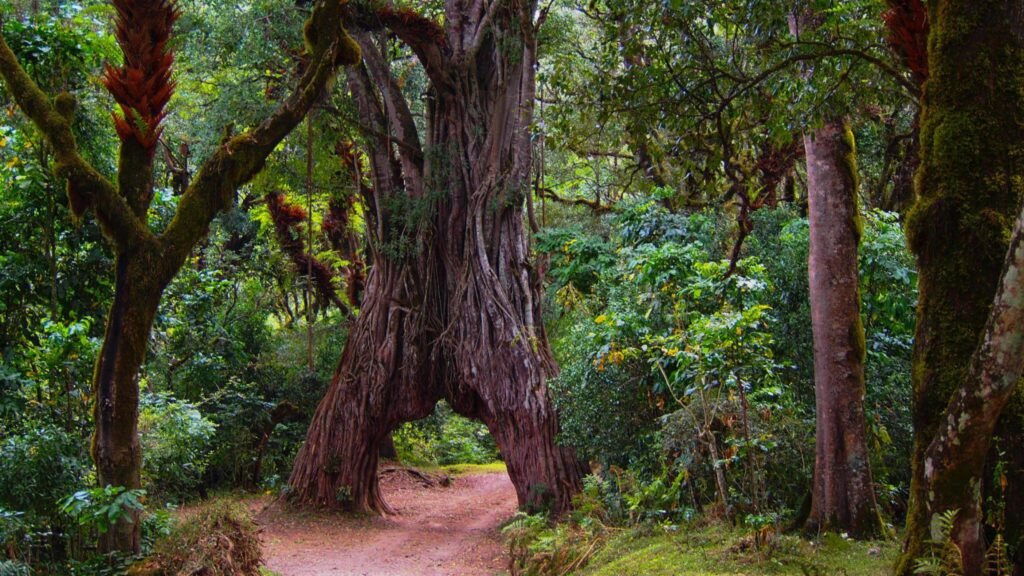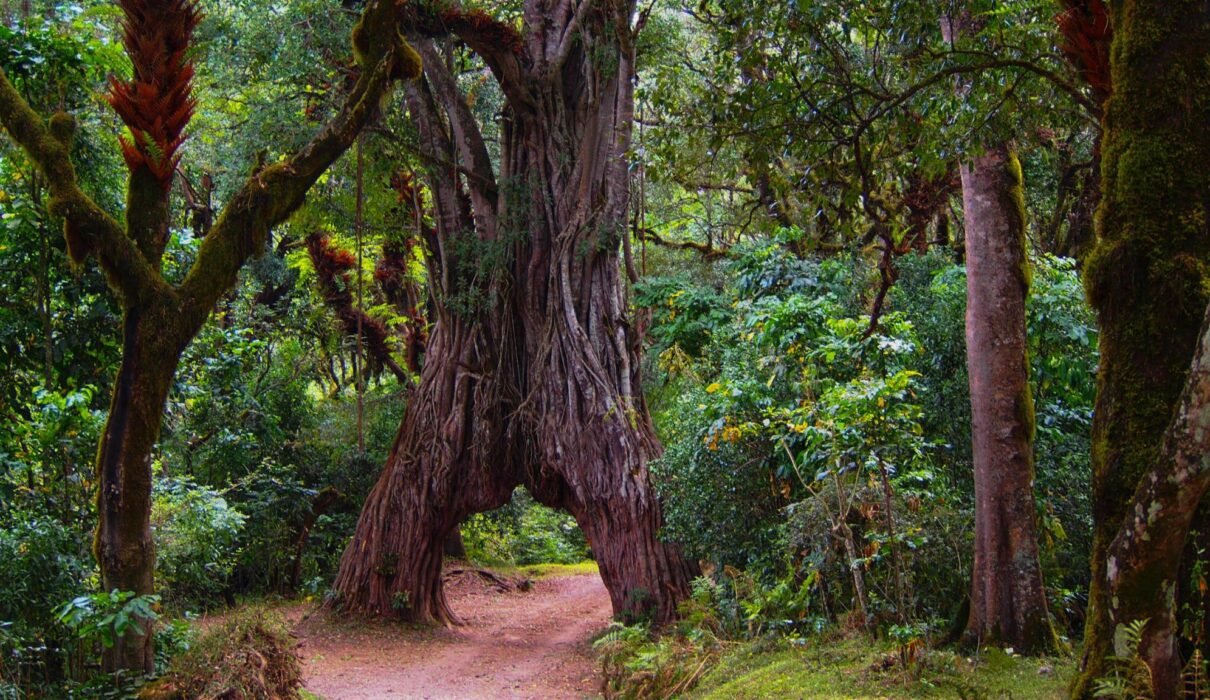Mount Meru Tanzania: A Comprehensive Guide to Climbing the Forgotten Giant 2026 – 2027 – Introduction
Mount Meru Tanzania: A Comprehensive Guide to Climbing the Forgotten Giant 2026 – 2027. Mount Kilimanjaro. However, this dormant stratovolcano, located within Arusha National Park, offers a unique and equally rewarding trekking experience. At 4,566 meters (14,980 feet), Mount Meru provides stunning views, diverse wildlife, and a challenging ascent that rivals any of the world’s great climbs. In this guide, we explore why you should consider adding Mount Meru to your adventure bucket list.

Mount Meru Tanzania: A Comprehensive Guide to Climbing the Forgotten Giant 2026 – 2027 :- Understanding the Terrain and Climate
Mount Meru’s landscape is as diverse as it is beautiful. The climb begins in lush, dense forests and transitions through moorlands before reaching the volcanic crater and the final summit at Socialist Peak.
- Geographical Features: The mountain features a dramatic crater, steep ridges, and an impressive ash cone visible from the summit.
- Climate Zones on Mount Meru: The trek passes through several climate zones, each with distinct characteristics. Climbers experience everything from tropical warmth to alpine cold.
- Best Time to Climb: The dry seasons, from June to October and December to February, are ideal for climbing, offering clear skies and stable weather conditions.
Mount Meru Tanzania: A Comprehensive Guide to Climbing the Forgotten Giant 2026 – 2027 / Climbing Routes and Itineraries
Mount Meru has one primary route for climbers: the Momella Route. This trail offers breathtaking views and encounters with wildlife, making the journey as rewarding as the destination.
Momella Route: The Only Route
The Momella Route starts at the Momella Gate and winds through several climate zones before reaching the summit. It’s the only route available, ensuring an unspoiled experience.
Standard Itinerary: 3 to 4-Day Trek
Most climbers opt for a 3 to 4-day trek, which includes stops at Miriakamba Hut and Saddle Hut before the final ascent.
Extended Itineraries: Adding a Day for Acclimatization
Adding an extra day for acclimatization can improve your chances of a successful summit and provide more time to enjoy the journey.
Necessary Permits and Regulations
Climbing Mount Meru requires adherence to specific regulations, including permits and guide requirements.
- Park Entry Fees: As Mount Meru is within Arusha National Park, climbers must pay park entry fees, which contribute to the park’s maintenance and conservation.
- Required Permits: You’ll need a climbing permit, which is usually arranged by your tour operator.
- Importance of a Certified Guide: Hiring a certified guide is mandatory. Guides are not only knowledgeable about the terrain but are also crucial for ensuring your safety.
Physical Preparation and Training
While Mount Meru is considered a non-technical climb, physical preparation is essential.
- Endurance Training: Cardiovascular exercises like running, cycling, or swimming can build the stamina needed for the trek.
- Strength and Flexibility Exercises: Strengthening your legs, core, and flexibility helps in handling the steep and uneven terrain.
- Mental Preparation: Mental toughness is equally important. Prepare for the challenge by setting realistic goals and staying motivated.
Packing Essentials for the Climb
Packing the right gear is crucial for a successful and comfortable climb.
Clothing Layers
Layering is key to adjusting to the varying climates. Start with moisture-wicking base layers, followed by insulating mid-layers and a waterproof outer shell.
Footwear
Sturdy, waterproof trekking boots with good ankle support are a must. Make sure they are well broken-in before the climb.
Backpacks
A 50-60 liter backpack should suffice for carrying your gear, with a smaller daypack for essentials during daily treks.
Sleeping Gear
A warm sleeping bag rated for -10°C to -15°C, coupled with a sleeping pad, will ensure a good night’s rest at high altitudes.
Trekking Poles and Climbing Aids
Trekking poles help with balance and reducing strain on your knees, especially during the descent.
Safety and Health Considerations
Your health and safety are paramount when climbing Mount Meru.
Altitude Sickness
Acclimatization is crucial to prevent altitude sickness. Stay hydrated, ascend slowly, and be aware of symptoms like headaches or nausea.
Emergency Procedures
In case of emergencies, guides are trained to manage altitude sickness and other health issues. Make sure you have travel insurance that covers high-altitude trekking.
Health Precautions
Vaccinations for yellow fever, hepatitis, and tetanus are recommended, and you should carry anti-malarial medication if traveling through low-altitude areas.
Accommodation Options
The climb offers basic but comfortable accommodations along the way.
Arusha National Park Lodges
Before and after the climb, you can stay in lodges near the park, offering comfort and the chance to explore the surrounding area.
Miriakamba Hut
Located at 2,514 meters, Miriakamba Hut is the first overnight stop, nestled within the forest.
Saddle Hut
At 3,570 meters, Saddle Hut serves as the base camp for the final ascent. The hut offers breathtaking views of the Meru Crater and the surrounding landscape.
Flora and Fauna of Mount Meru
Mount Meru’s diverse ecosystems are home to a wide range of wildlife and plant species.
- Unique Wildlife: You may encounter buffaloes, giraffes, and even leopards during the lower parts of the trek. Higher up, you’ll see various species of monkeys and, if lucky, some of the rare birds endemic to the region.
- Vegetation Zones: The trek begins in a lush rainforest, progresses through moorlands, and ends in alpine desert near the summit.
- Birdwatching Opportunities: Bird enthusiasts will enjoy spotting various species, including the Hartlaub’s turaco and the silvery-cheeked hornbill.
Cultural Significance and Local Communities
Understanding the cultural background of the region enhances your climbing experience.
Meru People
The Meru people, who live on the slopes of the mountain, have a rich cultural heritage. Interacting with them offers insights into their traditions and way of life.
Historical and Cultural Insights
Mount Meru has spiritual significance for the local communities. Learn about the myths and legends associated with the mountain as part of your journey.
Supporting Local Guides and Porters
Hiring local guides and porters not only ensures a safer trek but also supports the local economy.
Navigating the Summit: Socialist Peak
The final push to the summit is both challenging and exhilarating.
Final Summit Push
The ascent to Socialist Peak begins early in the morning to catch the sunrise. The trail is steep and can be treacherous, requiring careful navigation.
Views from the Top
From the summit, you’ll be rewarded with panoramic views of the Meru Crater, Kilimanjaro in the distance, and the vast landscapes below.
Descent Strategies
The descent is often quicker but equally demanding. Trekking poles can help reduce the strain on your knees.
Photography Tips for Mount Meru
Capture the beauty of Mount Meru with these photography tips.
Best Spots for Sunrise/Sunset Photos
The summit offers stunning sunrise views, while the descent through the rainforest is perfect for capturing the rich biodiversity.
Wildlife Photography Tips
Be prepared with a zoom lens to capture wildlife from a distance without disturbing the animals.
Capturing the Crater and Ash Cone
Wide-angle lenses are ideal for capturing the vastness of the crater and the dramatic landscape of the ash cone.
Post-Climb Activities
After your climb, consider exploring more of what the region has to offer.
Exploring Arusha National Park
The park itself is a gem, with opportunities for game drives, walking safaris, and canoeing on Momella Lakes.
Nearby Attractions
Visit nearby attractions such as the Ngurdoto Crater or the Serengeti if time allows.
Rest and Recovery
After a strenuous climb, spend a day or two in Arusha relaxing and enjoying local cuisine and culture.
Environmental Conservation Efforts
Mount Meru’s environment is fragile and deserves respect.
Leave No Trace Principles
Adopt the Leave No Trace principles to minimize your impact on the environment. Pack out all waste and respect wildlife habitats.
Conservation Projects
Several projects in the area focus on reforestation and wildlife conservation. Consider contributing to these initiatives.
How Climbers Can Help
Beyond respecting the environment, you can support local conservation efforts by volunteering or donating to relevant causes.

Mount Meru Tanzania: A Comprehensive Guide to Climbing the Forgotten Giant 2026 – 2027 : FAQs
1. How difficult is the Mount Meru climb compared to Kilimanjaro? Mount Meru is slightly less challenging than Kilimanjaro but still requires good physical fitness and preparation due to its steep and varied terrain.
2. Do I need technical climbing skills? No, Mount Meru is a non-technical climb, but a guide is required, and basic trekking experience is beneficial.
3. Can I climb Mount Meru independently? No, climbing Mount Meru requires a certified guide. Solo climbing is not allowed for safety reasons.
4. What wildlife might I encounter? You may see a range of wildlife, including giraffes, buffaloes, monkeys, and various bird species, particularly in the lower slopes.
5. How do I deal with altitude on Mount Meru? Acclimatize by climbing slowly, staying hydrated, and monitoring your health closely. Consider an extra day to adjust to the altitude.
6. What’s the best time of year to climb? The best time to climb Mount Meru is during the dry seasons, from June to October and December to February, when the weather is most stable.
Mount Meru Tanzania: A Comprehensive Guide to Climbing the Forgotten Giant 2026 – 2027 : Conclusion
Mount Meru may not have the fame of Kilimanjaro, but it offers an equally rewarding and challenging experience for trekkers. From its diverse wildlife to the stunning views from Socialist Peak, this climb is a journey through some of Tanzania’s most beautiful landscapes. With the right preparation and respect for the environment, your adventure on Mount Meru will be a memorable one.

